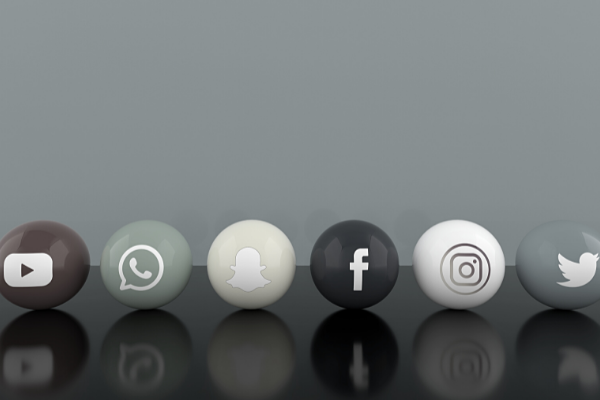"Personal branding is about building and creating content, and telling your story in a way that’s meaningful.” -Kyle Lacy
Influencers are everywhere online. Sometimes it seems as if everyone is obsessed with expanding their personal brands. But what does this mean for the professional world? What can financial brands learn from successful social media influencers?
James Robert Lay discusses this topic with Kyle Lacy, SVP of Marketing at Seismic, on the Banking on Digital Growth Podcast. Kyle co-authored the book Branding Yourself: How to Use Social Media to Invent or Reinvent Yourself and has spent years preaching the significance of personal and professional branding.
What is Personal Branding?
Personal branding is a bit of a hidden talent. You don’t always notice that someone is a wizard of personal branding until one day you realize you’re paying more attention to them and taking time out of your life to appreciate them as a person.
Someone with personal branding skills is 100% authentic and immensely relatable. They have charisma, charm, and personal magnetism, but they’re not necessarily overly slick or polished.
They’re real.
When they share a story about something they did or something that happened to them, you’re drawn to the power of their story.
Although personal branding has been around as long as the human race, the rise of social media has given the concept new meaning. Today, it’s possible to expand your personal brand across the entire globe through digital connections.
Why Should Financial Brands Care About Personal Branding?
Kyle says the most common question he hears on this topic is, "Why should I care about self-promotion?" Financial executives often miss the connection between personal branding and financial branding. Let's be honest, influencers get a bad rap and many people view them as shameless self-promoters with no real-world skills.
This couldn’t be further from the truth. Influencers and self-promoters are experts at building trust within their niche community. Most financial brands could only wish to have the extremely high levels of trust and goodwill popular Instagram influencers have built with their followers.
Related Content: Looking Back at 200 Reasons to Bank on the Future and Build Your Personal Brand
Kyle says most people and brands have wonderful, unique stories but they’re just terrible at telling them. Your audience wants to hear your stories, but they don’t want to be bored or have their time wasted with information that’s irrelevant to their lives.
For a brand, this means you can’t be a false prophet. You have to build a genuine connection with customers who are interested in connecting with you. Every interaction should respect the person’s boundaries and provide something meaningful.
How Banks and Credit Unions Can Leverage Personal Branding
When it comes to incorporating personal branding into the marketing plan of the average financial brand, a great place to start is with content. You’re likely already struggling to produce enough fresh content, so why not tap into personal branding?
Pete the Planner is an example of someone who effectively blends personal and professional branding. In addition to being a popular online influencer, he’s also a USA Today columnist, author, and company CEO.
Related Content: Building a Personal Brand Means Investing In Yourself
Is there someone within your ranks who could leverage their personal branding for your company? Of course, in the financial world, there are always compliance concerns. But an executive within your ranks would already be aware of the professional boundaries and may already have a fledgling personal brand online.
Professional Networking = Social Networking
In the financial world, social media doesn’t seem professional enough to be relevant. It’s a major misunderstanding when you consider the crucial component of trust.
All professional networking involves trust-building and relationship-building. As Kyle says, “You don’t go sit at a lunch with a client and talk all day long about their portfolio and not ask anything about their personal life.”
Social media is a vital aspect of this professional networking relationship. It deepens interpersonal interactions and helps people feel more authentically connected.
LinkedIn is perhaps the most widely accepted social media network among the business crowd. We can accept and understand that it’s a professional channel that helps professionals build connections. From there, the possibilities are endless.
Related Content: Social Media Secrets: Relationship-Building in a Digital World
Turn your LinkedIn posts into blog content, and vice versa. Start a podcast based on your top-read LinkedIn post topics. Kyle has seen people take a year’s worth of LinkedIn posts and turn them into published books.
YouTube, Instagram, Twitter, and TikTok aren’t really so different from LinkedIn. Many financial planners are highly successful in creating TikToks to address real-world financial issues. The format works because it feels genuine and is served up in bite-sized chunks of content.
Take a look at Jennifer Beeston on TikTok. She’s in the mortgage space and uses platforms like TikTok, YouTube, and Instagram to educate and entertain people about mortgage-related topics. Many financial brands could learn a lot from Jennifer’s style of personal branding.
What if You’re Just Not Very Digital?
Kyle frequently interacts with executives who don’t feel comfortable on a platform like TikTok and have only minimal skills in maintaining an online presence in general. Here’s an easy tip for beginners: pull content from the sources you’re comfortable with.
For example, if you’re a reader, pull an excerpt from a book you just read and share it on LinkedIn - of course, crediting and linking to the author. Give your feedback on the excerpt and encourage others to share their thoughts about it.
Another option is simply posting your own financial-related experiences on your social channels. If you had a particularly wonderful interaction with someone that day, share it on Facebook and LinkedIn, talking about what it means from a financial professional’s perspective. When you start small and build the habit, it gets easier over time.
One thing is for sure: It’s not acceptable to just say, “I don't do digital” unless you’re planning to get out of the financial business and retire tomorrow. If you don’t get involved with digital personal branding now, Kyle says, “You’re still going to be looking for a job instead of building a career.”
Honing Your Elevator Pitch to Expand Your Brand
One of the most important things you can do to refine your personal and professional branding is to develop what’s known as your “elevator pitch.” It’s a way of summarizing who you are and what you do in one sentence that could be shared in a quick conversation on an elevator.
What’s your value statement?
How do you tell your story?
What’s the #1 most important thing you can do for others?
What’s the most interesting question you can answer about financial services and money?
Next, start building your content portfolio or library around your elevator pitch. Collect all of the questions and answers that commonly come up in your professional life and corral them into some sort of archive. This is now your personal portfolio of discussion content.
When you meet new people, you can now say, “Hey, I just wanted to follow up with you about the topic of X. One of the top stresses I see is this. Here’s some additional information.” Now you’ve built a new connection with that person and have positioned yourself as a voice of authority on the topic.
See the connection to social media? Take the same topic to LinkedIn and post about it. Then make a short educational YouTube video about it. Repurpose it into a TikTok. Share, share, share, and build your personal/professional brand.
One final note: Remember not to allow your content to become overly generalized or canned. The key here is personalization. People can easily sniff out a fake, so make sure you’re always speaking from the heart. When it comes to personal branding, it’s all about keeping it real!
This article was originally published on June 14, 2022. All content © 2024 by Digital Growth Institute and may not be reproduced by any means without permission.




